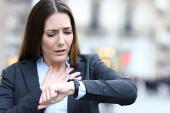DANCAVAS: Food for Thought as CV Screening in Older Men Misses Mark
The study has multiple limitations, including the exclusion of women, but mortality and stroke benefits were evident.

CV screening did not reduce the risk of all-cause death in men 65 to 74 years of age in the DANCAVAS trial, investigators revealed this past weekend at the European Society of Cardiology Congress 2022. However, the results of the large and ambitious study has stirred debate about the clinical relevance and benefits of screening tests more broadly.
“We were close, but not close enough,” Axel Diederichsen, PhD (Odense University Hospital, Denmark), DANCAVAS’ lead researcher, said in his presentation. The results were simultaneously published in the New England Journal of Medicine.
For the study, 46,526 men in Denmark were randomly allocated to usual care or an invitation to receive a comprehensive CV screening that included CT-derived coronary artery calcium (CAC) scoring to detect aneurysms and atrial fibrillation, ankle brachial index to diagnose PAD, and blood tests for elevated cholesterol and diabetes. At 5.6 years of follow-up, the rate of all-cause mortality was 12.6% in the screening group and 13.1% in the control group (P = 0.06), a 5% relative risk reduction that just missed statistical significance.
Looking further at the prespecified subgroups, there was an interaction by age in men 65 to 69 years of age for the primary endpoint of all-cause mortality (HR 0.89; 95% CI 0.83-0.96), but not in the older age group. In a press conference prior to the presentation, Diederichsen said those findings constituted “a never before seen reduction in a community-based screening trial.”
Yet a major limitation with regard to extrapolating the results is that DANCAVAS included only men. The authors say this was done because in an earlier pilot study women had a lower prevalence of clinically significant findings on screening, particularly with respect to CAC scores.
This aspect, “combined with the lower incidence of cardiovascular disease among the women, made us focus on men,” Diederichsen and colleagues explain in the NEJM paper, which was led by Jes S. Lindholt, MD (Odense University Hospital). “Additional study of cardiovascular events among these women is underway, although power is limited. Increasing the age range for eligibility in women (eg, 70 to 79 years) would have been expected to increase the prevalence of abnormal findings and to substantially decrease the percentage of participants who underwent screening.”
#1 Assessing comprehensive cardiovascular screening among men 1400 65 to 74 years of age in Denmark to assess in improved outcomes, cost effective approach from a societal perspectivehttps://t.co/J4wV04rrNW
— Khurram Nasir (@khurramn1) August 27, 2022
See Summary below, though deeper dive needed pic.twitter.com/R40qgB5PXC
But Harriette Van Spall, MD, MPH (McMaster University, Hamilton, Canada), the scheduled discussant following the presentation, stressed that CV prevention, like CV death, is as relevant to women as it is to men.
“The trial composition is such that inferences can only be made to Danish males between the ages of 65 and 74 years, as the authors themselves conclude,” Van Spall noted. She further questioned “whether the investigators, who are prolific and masters at clinical trial execution in the prevention space, would consider eliminating sex-based eligibility criteria in their next big cardiovascular prevention trial.”
Of note, a DANCAVAS-II study is planned that also will only recruit older men.
In his response, Diederichsen said funding issues and the probability of not having a large enough sample to gain insight were primary reasons for limiting the study to men.
Varied Opinions
DANCAVAS was conducted between 2014 and 2017 among men aged 65 to 74 years (mean age 68) living in 15 municipalities in Denmark. Those randomized to the screening and intervention arm were invited to participate (n = 16,736) and of those, 62.6% (n = 10,471) underwent the planned screening. The control group received usual care only, with no screening (n = 29,790). When abnormalities on screening were found, patients were offered prophylactic treatments, including medications and surgery. Due to the trial’s design, the analysis reflects outcomes for all those invited, rather than only the 62.6% who underwent the screening, which the authors say may have underestimated the full effects of screening tests combined with their algorithm-derived follow-up care for abnormalities.
1/14 To facilitate discussion, I put together brief a tweetorial on the DANCAVAS trial while between sessions here in Barcelona. @NEJM link: https://t.co/U5TMN9Ngoy
— Michael J. Blaha (@MichaelJBlaha) August 27, 2022
Among the secondary outcomes of acute MI, aortic dissection, aortic rupture, and stroke (all, ischemic, hemorrhagic, and unspecified), the only ones to show a reduction in the screened group versus controls were stroke (HR 0.93; 95% CI 0.86-0.99) and ischemic stroke (HR 0.89; 95% CI 0.81-0.96).
There were no apparent downsides to screening in the study, with the authors reporting no harm to participants with respect to quality of life.
In addition to her qualms about the all-male cohort, Van Spall raised a number of other concerns. For one, the lack of an active screening comparator group makes it unclear whether CT imaging is more effective than actively screening for traditional risk factors or assessing global CV risk with tools such as the Framingham risk score.
The trial composition is such that inferences can only be made to Danish males between the ages of 65 and 74 years. Harriette Van Spall
“Arguably, there was a missed opportunity to screen for and treat cigarette smoking in the intervention group,” she said, adding that restricting the abdominal aortoiliac imaging to risk-enriched groups, such as cigarette smokers, could conserve additional resources.
Results of DANCAVAS diverge from those of the Danish VIVA trial, also led by Lindholt, which showed a 7% relative reduction in the overall risk of death among men 65 to 74 years of age invited to undergo a combined screening for abdominal aortic aneurysm, PAD, and hypertension.
Other CV prevention experts, however, see value in the trial beyond the just-missed primary endpoint.
Khurram Nasir, MD (Houston Methodist DeBakey Heart & Vascular Center, Houston, TX), for one, told TCTMD that DANCAVAS offers more than meets the eye.
“I'm not sure patients will mind the 0.06 P value enough to say, ‘I'm not interested in that 5% all-cause mortality and 11% stroke reduction,’” he said. “It will require a lot of deliberation from policy makers, from the guidelines folks, and even from [Centers for Medicare & Medicaid Services about] how we apply these results in the US, and more importantly, how can this guide us to do further studies to clarify.”
Nasir also noted that a separate cost-effectiveness analysis by the DANCAVAS investigators, published in the European Heart Journal, suggests that CV screening could make sense from a societal perspective in the European Union at a cost of €207 per person. He added that while more research is needed, most of the tests could be done in the United States for US $200-$250.
“For calcium testing, which is not reimbursed right now, the price out of pocket [in the US] is $50 to $100, and in our experience, patients are more than willing to pay for it because it gives them so much information about their risk and management,” he added.
Others, like Michael Blaha, MD (Johns Hopkins School of Medicine, Baltimore, MD), anticipated that the results will stir debate. But, he said, it shouldn’t be overlooked that the screening likely saved over 100 Danish lives.
To TCTMD, he said despite the major limitation of excluding women and failure to meet an “elusive” endpoint like all-cause mortality, he doesn’t view the study as negative. Like Van Spall, he said further analyses, especially of the as-screened population, are needed for context.
“Both analyses are important, but I'm actually more interested in the as-screened population . . . and I'm quite certain it's going to be more positive,” Blaha said. “My personal opinion is this is not like a drug trial where it's a very specific intervention [and] you can make specific estimates of exactly how many people you need to do the study. This is population health, not just the health of one disease state. I think that it's markedly suggestive, if not positive, for such a broad-ranging strategy.”
Blaha added that while he doesn’t think the study needs to be replicated in every country, he would like to see the United States implement a large study of CV screening in younger patients.
#DANCAVAS study at #ESCCongress you may see “La minute de Pierre” at https://t.co/zxbmeWBmMB @CNCFCardio . Total mortality as primary endpoint was too ambitious. Screening middle age individuals with #CTA seems effective to reduce MACE. To kim : 1/3 refused the screening pic.twitter.com/u2lXqrYHvR
— SABOURETCardiologist (@SABOURETCardio) August 27, 2022
“We've been asking for a study like this in the United States for a very long time and been frustrated that we've never been able to get the data,” he said. “Now we have some [data], and we need to realize that [DANCAVAS] is going to be the best evidence we have for a while on cardiovascular screening and really dig in and figure out why it might work and how to apply it.”
Blaha added that additional debate will be helpful for pairing down the screenings to those most capable of “moving the needle” in reducing mortality. Coverage for CAC screening, for example, could create a more balanced playing field from a socioeconomic point of view by reaching high-risk patients who don’t have regular contact with the healthcare system.
In the press conference, Diederichsen said “I don’t think we’re there yet,” with regard to screening all men in their 60s and/or 70s, but added that he believes “imaging might be a game changer” in CV prevention. The investigators plan to conduct another analysis of the DANCAVAS cohort at the 10-year mark.
L.A. McKeown is a Senior Medical Journalist for TCTMD, the Section Editor of CV Team Forum, and Senior Medical…
Read Full BioSources
Lindholt JS, Sogaard R, Rasmussen LM, et al. Five-year outcomes of the Danish Cardiovascular Screening (DANCAVAS) trial. New Engl J Med. 2022;Epub ahead of print.
Disclosures
- Diederichsen reports no relevant conflicts of interest.





Comments